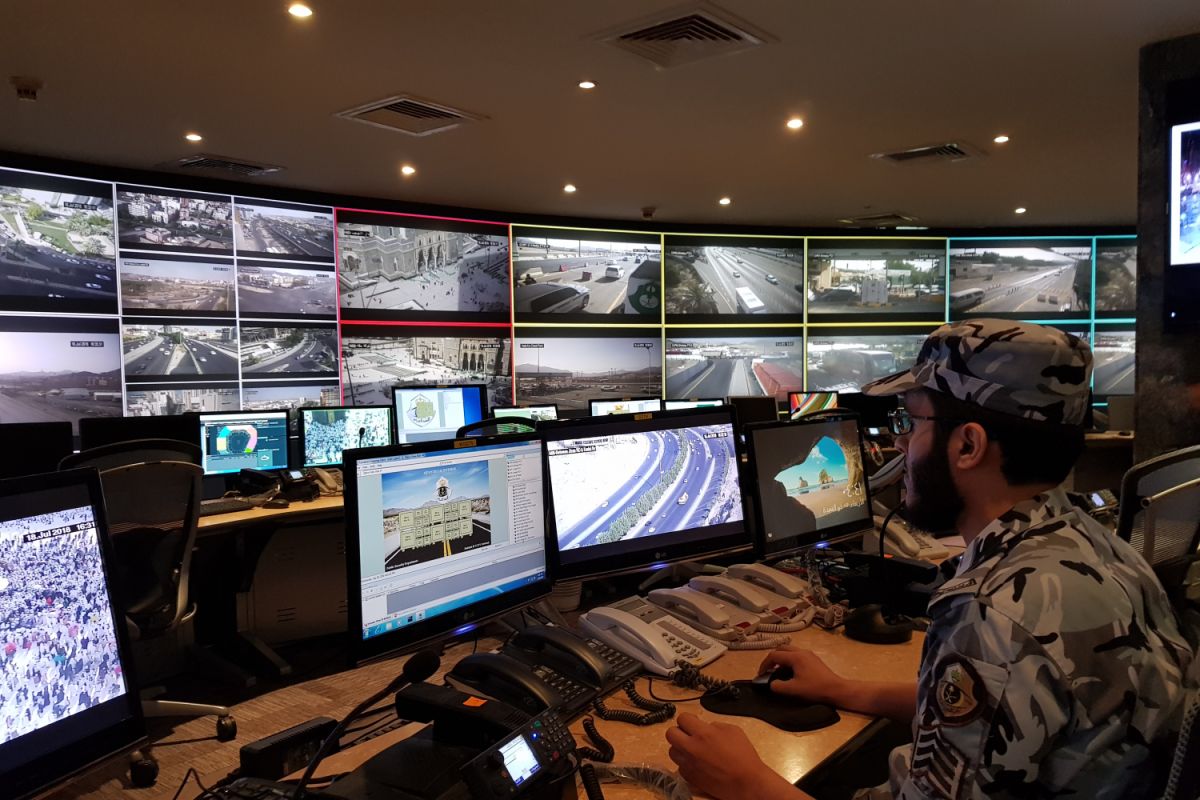For six days, starting from Zulhijja 8-12 Hijri (August 19 - 23, 2018), three million Muslims will perform the Hajj, which is one of the Five Pillars of Islam.
The Hajj procession, namely, wuquf in Arafat, overnight at Muzdalifah, throwing stones at Jamarat, staying overnight in Mina, and tawaf and sa`i at the Grand Mosque (Masjid Al-Haram), Mecca will be carried out simultaneously by three million Muslims.
These three million Muslims come from countries from throughout the world, each with their own diverse cultural backgrounds, languages, social classes and ages. They also have different physical conditions, including those who use wheelchairs or other supporting devices, as well as others who are blind, deaf, and speech impaired, and have other disabilities.
As required, all of the Hajj processions must be fulfilled by pilgrims in order to have participated in a perfect worship, which has been carried out for more than 14 centuries. Participants will simultaneously move from one location to another, all at the same time and without delay.
"Crowd management"
Managing the pilgrimage and ensuring that the entire procession is run smoothly, while guaranteeing that all pilgrims are safe and comfortable, without exception, is a major challenge for the Government of the Kingdom of Saudi Arabia.
Therefore, the Royal Government has put in place a crowd management system using the latest technology, according to the Chief of the Hajj and Umrah Security Forces, Maj. Gen. Muhammad bin Wasl Al-Ahmadi, who described it as a unique system that cannot be found elsewhere in the world, since the conditions during the Hajj and its management are very unique.
The crowd management system is used in the two Holy Cities of Islam, Mecca and Medina, with all concepts, technology and human resources provided by the Kingdom.
According to Maj. Gen. Al-Ahmadi, the mission of monitoring and controlling the crowds, as carried out by the Hajj and Umrah security forces, was supported by thousands of cameras installed at every point in the Grand Mosque complex and at other pilgrimage sites in Mecca.
The monitoring activities are carried out 24 hours per day from the operating control room. All officials and leaders of relevant government institutions are present to ensure that surveillance activities run smoothly, and to be prepared to face potential threats that can arise at any time.
Maj. Gen. Al-Ahmadi said the Special Forces have very strong capacities and carry out various strategies that have been prepared with precise calculations.
The Special Forces which control hajj and umrah crowds are well-trained to handle all types of emergencies and risks that can occur at any time.
Maj. Gen Al-Ahmadi emphasized that the monitoring and controlling of crowds in the two Holy Cities are carried out in the protection of Allah (All Glory belongs to Him, He is The Most Exalted and The Most High), and therefore the entire system is applied with high discipline, while paying attention to every detail in order to prevent accidents.
Electronic technology
During the Hajj, three million people will move together from one place to another through very small areas, compared to the size of the crowds.
The head of the Grand Mosque`s Special Security Forces, Maj. Gen. Abdullah bin Mohammad Al-Aseemi, stressed that the most crucial problem in the movement of pilgrims occurs when pilgrims stop, even for a few seconds.
"Therefore, our mission is to control the speed of the movement of pilgrims by paying attention to every detail at each point, including at every entrance to the mosque," he said, adding that the special forces also ensure that every individual carries out all rituals with discipline and obeys all rules.
Maj. Gen. Al-Assemi added that if there was a back-up at any point, then within seconds the Special Forces would arrive at the location and take over the management of the crowds.
One of the most crowded locations faced by security special forces is when pilgrims are in Jamarat to throw stones at the three poles.
Maj. Gen. Al-Assemi explained that the security control center continues to monitor the number of hajj pilgrims who arrived at the Rami al-Jamarat Bridge to carry out the ritual of throwing seven stones at the pillars that symbolize devil.
The bridge consists of five floors, with one of them being provided for worshipers with special needs.
At the control center, the Special Forces monitor their presence on monitor screens that display every move and the number of worshipers. This monitoring is carried out to ensure that pilgrims are always safe and comfortable, and prevent potential accidents.
In addition to Jamarat, the ritual of moving around the Ka`bah seven times, or tawaf, is also under the supervision of the Special Forces. Electronic technology, which is installed at the Grand Mosque Complex, will monitor the movement of 170,000 worshipers who carry out tawaf each hour.
If the mataf (the area around the Ka`bah to carry out tawaf) is full, the crowds will be diverted to the first floor, where there are also special lanes for disabled and elderly people. To ensure that the movement of pilgrims runs in an orderly manner, and to prevent panicking, separate internal and external doors in mataf are controlled by the Special Forces with electronic systems.
With the increasing number of pilgrims each year, the Special Security Forces in the Grand Mosque also has the task of helping disabled and elderly pilgrims, to ensure they are able to perform all the Hajj rituals safely and comfortably.
Those efforts made by the Royal Government in serving the guests of Allah at the two Holy Cities during the Hajj season are part of the implementation of the Saudi Arabia Vision 2030, which will ensure that the Kingdom remains as the heart of the Islamic world.
Editing by A. Abdussalam
Reporter: Libertina W. Ambari
Editor: Bambang Purwanto
Copyright © ANTARA 2018












